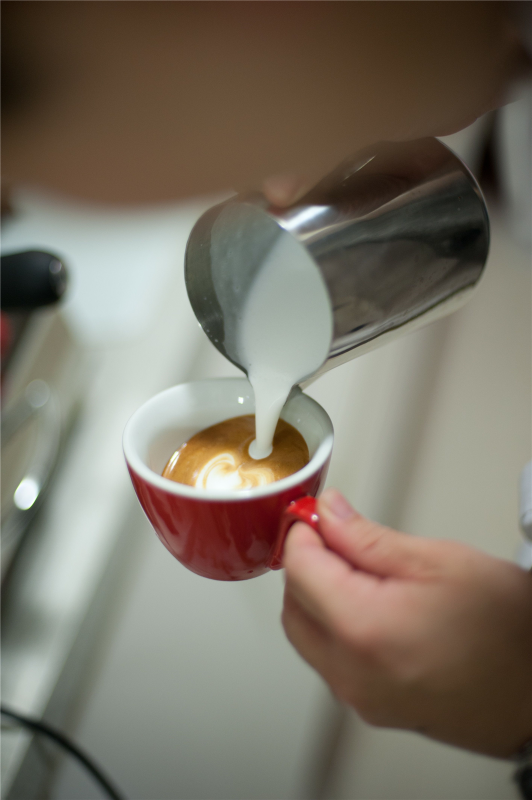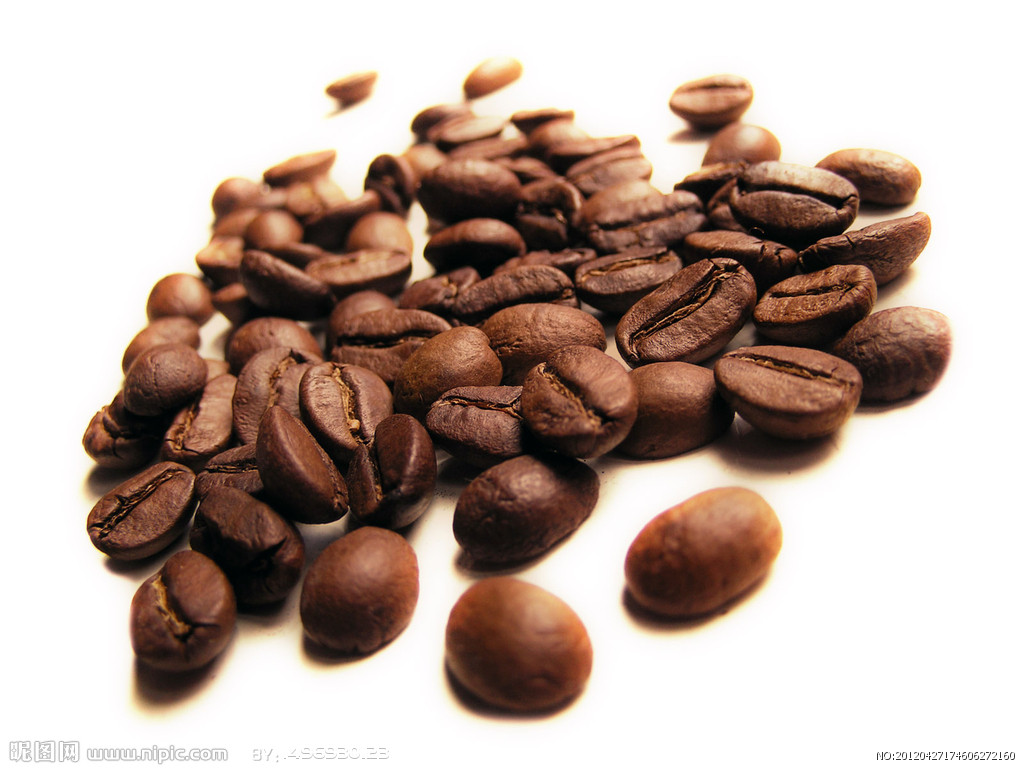Get to know espresso, draw a clear line with it, and understand the basic knowledge of espresso
Thanks to the popularity of coffee chains such as Starbucks and Costa in China, espresso (Espresso) and coffee drinks based on it have almost become synonymous with coffee in Chinese. Can not calmly say a few mouthful transliteration words such as "latte", "mocha" and "caramel macchiato" simply disqualify literary and artistic youth. However, although they are all made from coffee beans, Espresso and coffee can be said to be two completely different drinks in terms of extraction method, taste and composition, and the difference between them is no less than brandy (usually distilled from wine) and wine.
Espresso was originally a product of necessity. For the Italians in the 19th century, the quantity and quality of coffee beans imported mainly by British merchants were never guaranteed. Therefore, for Italian coffee shop owners, there are always two problems to be solved: 1. How to drink more coffee with fewer beans; 2. How to make shoddy coffee beans not so bad. The solution to the first problem came from the owner of Cafe Greco, a Roman cafe in Napoleon's "continental blockade" era, which had the characteristics of Italian "black Talia": coffee was 1/3 less, the price was 1/3 cheaper, and the cup was reduced to half, and the result was a great success. The Italian habit of drinking espresso, and the format of the espresso cup (Demitasse cup, which means "half cup"), was established in this era.
A typical Demitasse cup is used to hold about 30 milliliters of Espresso. Such a cup is called single shot.
As for the second problem, Italians have long found that deep roasting can reduce the unpleasant sour taste of shoddy coffee beans, while reducing the time for coffee powder to come into contact with hot water can effectively prevent foul-smelling ingredients from dissolving out of inferior beans. At the same time, in order to ensure the concentration of coffee, coffee powder should be ground as fine as possible. In order to let the hot water pass through the fine powder smoothly, it is also necessary to increase the pressure of flushing. Therefore, since the 1820s, all kinds of Ricong have used their brains to use the principles of pressure, siphon or vacuum to achieve "high pressure and fast" coffee extraction. In 1901, Luigi Bezzera of Milan invented the machine for soaking coffee with high-pressure steam and participated in the Milan World Expo in 1906. The sign of the booth read: Caffe Espresso (meaning "fast coffee"). At this point, the modern Espresso was born. Later, the heat source of the espresso machine was changed from fire to electricity, and the steam pressure increased to 9-10 atmospheric pressure, but the basic principle was the same.
Deeply roasted (Italian roast or Espresso roast) coffee beans with oils oozing from the surface
Therefore, the definition of the so-called "espresso" can be summarized as follows: the extract obtained by using high-pressure steam through the deep-roasted ultra-fine coffee powder. From a starting point, it should be said that Espresso is a very successful invention, because it can greatly reduce the use of coffee powder. The standard amount of coffee powder for a cup of Espresso is 7 grams, while a cup of regular coffee (100-120ml) needs 10-12g. At the same time, this brewing method has very low requirements for the quality of coffee beans-no matter what beans are roasted to the level of Italian, the original flavor of coffee beans is almost completely lost and transformed into scorched aroma and strong bitter taste. Finally, this method of soaking coffee is very simple and fast, and does not require much technology. As long as a little familiar with the use of the machine, a cup can be made in dozens of seconds. Espresso has these characteristics, and it is reasonable to be welcomed by fast-food coffee shops.
The reason for calling Espresso the "next five" is more than that. The most orthodox way to drink Italian is not to mix it with milk to make a latte or cappuccino, but to add a large amount of sugar (2-5 tablespoons of coffee spoon) and drink it at once, then scoop up the remaining sugar at the bottom of the cup with a coffee spoon. Since scraping the bottom of a cup with a spoon is considered rude in most cultures, this most "authentic" way of drinking Espresso is not widespread outside Italy.
Espresso is ferociously adding sugar.
The taste of Espresso is quite different from that of coffee. It has almost no sour taste but only bitter taste. As far as coffee is concerned, the sour quality plays an almost decisive role in the annual international evaluation. In recent years, highly rated beans such as Esmeralda Geisha and El Injerto Nano are famous for their elegant sour taste (the title of specialty coffee will be described in detail later). In addition, due to the low solubility of caffeine in water, the content of caffeine in Espresso with short extraction time will be very low. It is almost impossible to expect to be refreshed by the coffee drinks offered by Starbucks.
What really makes Espresso popular all over the world is the "Seattle-style coffee shop" represented by Starbucks. It is characterized by adding milk, cream or chocolate to Espresso as the center to develop / provide a variety of coffee-flavored drinks. This picture, which is widely circulated on Weibo and is known as the "most complete variety of coffee" picture, should actually be called "the most complete Seattle-style coffee shop product diagram":
Machi (elegant) dot, latte and cappuccino are traditional Italian drinks.
Caramel macchiato, mocha and Brevie were invented by Starbucks itself.
Irish coffee does come from Ireland, but there is a mistake in the picture, not Espresso but regular coffee.
There are a variety of coffee drinks called "Viennese Coffee", including "Campbell Blue" in the second and third row.
"White coffee" was invented by Australians or New Zealanders, and the Northern Hemisphere is generally considered a latte without milk foam.
American style is Espresso mixed with water, but many people mistakenly think that any bad mechanism black coffee is called American style.
Although the flower on the foam is called Latte art, it can appear on any kind of coffee, and there is no point in debating whether it should be called a latte, macchiato or cappuccino.
Knowing that caramel macchiato was pioneered by Starbucks, gimmicks such as "halo dye in Italian symbolize a sweet mark" are dispensable. The relationship between these coffee-flavored drinks and coffee itself, like the relationship between brandy cocktails and wine, is not too much to say. In other words, answering cappuccino when asked what kind of coffee you like is like answering Saratoga when asked what kind of wine you like. Therefore, before formally talking about coffee, Wanwang should draw a clear line with these smokers.
Source:
Blogs with abnormal head
Important Notice :
前街咖啡 FrontStreet Coffee has moved to new addredd:
FrontStreet Coffee Address: 315,Donghua East Road,GuangZhou
Tel:020 38364473
- Prev

Illustration; the production of Coffee pull pattern Tulip Analysis of the Fusion of Coffee Milk foam and espresso
In the process of learning espresso, Brista Coffee West Point College offers courses related to the espresso class. The difficulty of pulling flowers in tulip coffee is mainly summarized as follows: 1, the extraction of espresso; 2, the selection and use of coffee cups; 3, the treatment of milk foam; 4, the rationality of the tip of the tub; 5, the fluency of foam forward.
- Next

Coffee Dictionary-- A detailed introduction to the shape features of common coffee beans, good and bad types of coffee beans
Coffee cherry: the fruit of a coffee tree, named because its rind is bright red and its shape is very similar to cherries. Round beans: in the process of coffee fruit growth, one of a pair of seeds develops very well, and the other seed is eaten so that the coffee beans that are supposed to be oval become round. Elephant beans: larger than ordinary coffee beans, the taste is usually insipid. Coffee belt (Coffe)
Related
- What is the meaning of lactic acid fermentation with coffee bean treatment?
- How to judge the state of foam by sound?
- How does the latte pull out the unicorn pattern? Come to get for a little trick to improve the flower pull!
- Will flower pulling affect the taste of the latte?
- Do you know the history of coffee?
- The difference between honey treatment and sun washing what is raisin honey treatment?
- What kind of milk can a novice use to make coffee foam to keep the foam longer? The correct method and skills of milking tutorial sharing
- Why do washed coffee beans taste sour? Flavor characteristics of washed Coffee
- Introduction to the skill of how to practice the size and height of water injection around the circle of hand-brewed coffee
- How do beginners practice coffee flower drawing from scratch?

